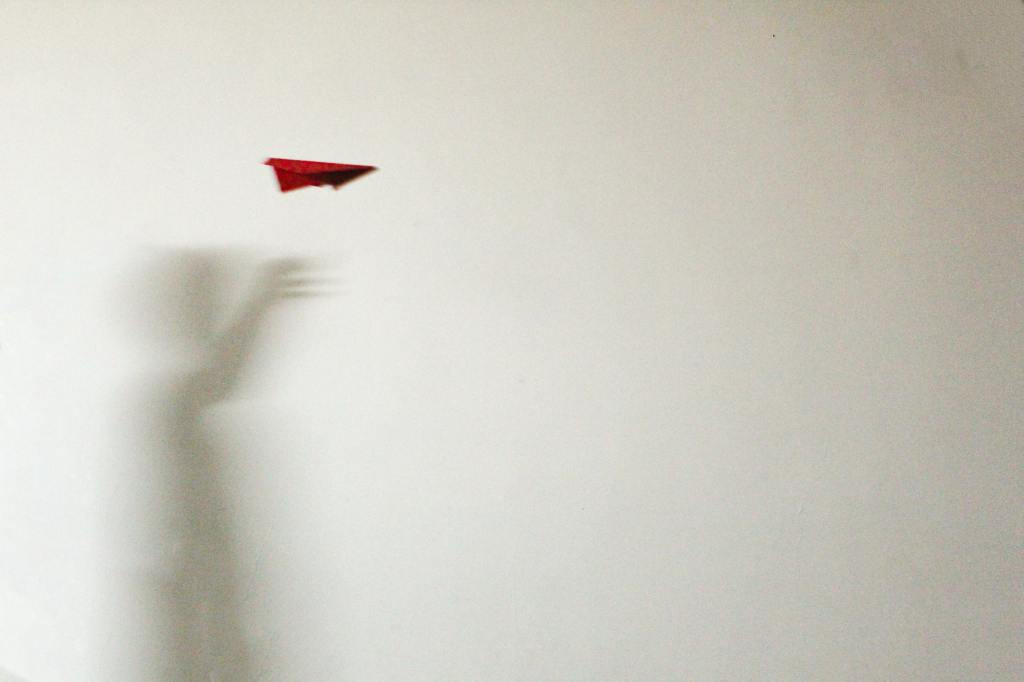Being Amazed

Some of you know that my undergraduate degree is in Aeronautical Engineering. As a teenager attending California Polytechnic State University in San Luis Obispo, my original academic goal was to become an aircraft designer. No doubt, this stemmed from my childhood fascination with airplanes—from folding my first paper airplane, to assembling plastic scale models, to sitting in the family station wagon with my dad, watching the planes take off and land at the local airport.
Even to this day, I can still remember the equations for lift and drag, still remember working out Bernoulli’s equation, still remember working all that math out on paper and turning those numbers into drawings. It was all very…engineery.
But here’s the thing. Every time I get in an airplane, whether a small plane or an airliner, I still look out the window and watch the wings cut into the air, feel the craft lift off the runway, watch the cars and buildings get smaller and smaller below me as the plane touches the sky.
And I’m still amazed.
It’s practically akin to magic. And even though I at one time knew all the math and science and tech, it doesn’t take away the feeling of awe and wonder I experience in those moments.
Why aren’t we like that in more things? Why isn’t wonder and amazement a greater part of the way we interact with the world?
Every time you touch your phone, you cause invisible electromagnetic waves to zip around in the atmosphere, even onto satellites floating many miles above us, which turn into video images and text messages and directions to the nearest Starbucks.
Every time you turn on a faucet, water that floated in a cloud in the sky has gone through miles and miles of rivers and streams and thousands of pipes before ending up in your glass.
Sunlight travels at around 300,000 kilometers every second, and we orbit the sun at about 150 million kilometers. So it takes sunlight about 8 minutes and 20 seconds to travel from the surface of the sun before being refracted by your cool sunglasses.
The average breath taken by a human being requires millions of cells, all organized in complicated, coordinated actions throughout your body, most all of which happens autonomously. And the average person breathes somewhere between 550 and 750 million breathes in their lifetime.
In short, we’re constantly surrounded by miraculous occurrences and extraordinary experiences, and every moment of our lives is a part of the great adventure. And yet, we yawn and shrug and grumble and whine about the very precious life moments we are gifted.
Where is our sense of awe and wonder? Where is our sense of gratitude and appreciation? As artists of faith, why are we not more curious and inquisitive, more thankful and astonished, more wide-eyed at the world?
I remember listening to the late Dr. Dallas Willard as he spoke to a group of people on the nature of the Kingdom of God. During his talk, someone asked, “If we are indeed living in the Kingdom, shouldn’t we be seeing miracles?”
Willard, who always had a profoundly refreshing response to the big questions, explained that when the Kingdom of God breaks out somewhere, miracles do indeed happen with increasing regularity, but also they become more commonplace and therefore not as astonishing. In other words, miracles are normative in the Kingdom of God.
So perhaps one aspect of spiritual maturity is to fight against our jaded predispositions and our monochromatic myopia, and open the eyes of our hearts to the miracles which happen all around us. Like drinking a glass of clean water. Or feeling the warmth of the sunshine. Or breathing.
My junior year at Cal Poly was pretty intense. This was the make or break year for our major, as we had to take several advanced classes, including the dreaded Aerothermodynamics series. Aerothermo was known for flunking out many aero majors, and the pressure to pass the class was intensely fierce. I remember a particularly vigorous study day at the library before finals. In an effort to clear the fog in my brain, I took a break, made a paper airplane, climbed to the top of the long stairs, and let it go. And as I watched it float lazily down to the main floor, I took a deep breath. And rooted for the wind.
At some level, it was a futile, nonsensical, symbolic gesture. But it was important, nonetheless. Because I needed to remind myself of why I was there.
[Banner photo by Sebastian Leon Prado on Unsplash. Bottom photo by Abolfazl Ranjbar on Unsplash.]












